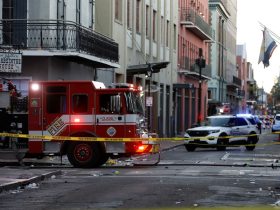Philadelphia: the Drug Overdoses Capital of the State
Philadelphia, a city in Pennsylvania, has been named the state’s capital for drug overdoses. In 2020, it recorded the highest number of drug overdose deaths in the state and was the second-highest in the entire United States. Many of these deaths were linked to opioids, particularly fentanyl.

Philadelphia is a large and economically disadvantaged city with a history of drug problems. Its location along the Interstate 95 corridor makes it a convenient center for drug distribution and smuggling. The city has struggled with drug abuse since the crack cocaine epidemic in the 1980s and 1990s.
To tackle the drug overdose crisis, Philadelphia has taken various measures, including increasing access to naloxone (a drug that reverses opioid overdoses) and providing treatment for those with substance use disorders.
However, some proposed solutions, like the idea of a supervised injection site, have sparked controversy and faced opposition from state and federal governments. This site would allow people to use drugs under medical supervision and receive services to reduce harm.
The drug overdose problem in Philadelphia is a significant public health issue affecting millions of Americans annually. It requires urgent attention and collaborative action from all levels of government and society.
Factors That Contribute to Drug Overdoses in Philadelphia
Several factors contribute to drug overdoses in Philadelphia:
1. The presence and strength of opioids, particularly fentanyl, a synthetic opioid much more powerful than morphine (50 to 100 times). Fentanyl is often mixed with other substances like heroin, cocaine, methamphetamine, or PCP without the user’s awareness, heightening the risk of overdose and death.

2. Limited access to effective treatment and recovery services for those dealing with substance use disorders. Individuals using drugs may encounter obstacles in obtaining healthcare, housing, employment, and social support. They may also face societal and healthcare provider stigma and discrimination.
3. The impact of the COVID-19 pandemic on drug trends and harm reduction efforts. Disruptions in the drug supply chain, increased poverty and unemployment, reduced access to testing and naloxone (a medication reversing opioid overdoses), and diminished community engagement and outreach activities have all resulted from the pandemic.
4. Racial disparities in drug overdose deaths. In 2021, Black Philadelphians aged 35-44 had the highest unintentional overdose death rates compared to other racial/ethnic groups.
They also exhibited higher rates of opioid use disorder than white or Hispanic residents. Contributing factors to this disparity include historical trauma, social inequality, environmental injustice, and a lack of trust in the healthcare system.
You May Also Read:
- This City in Pennsylvania is Smoking More Weed Than Anywhere Else in the State
- This Florida City Has Been Named the Drug Overdoses Capital of the State
- This City Has Been Named the Murder Capital of Arizona












Leave a Reply